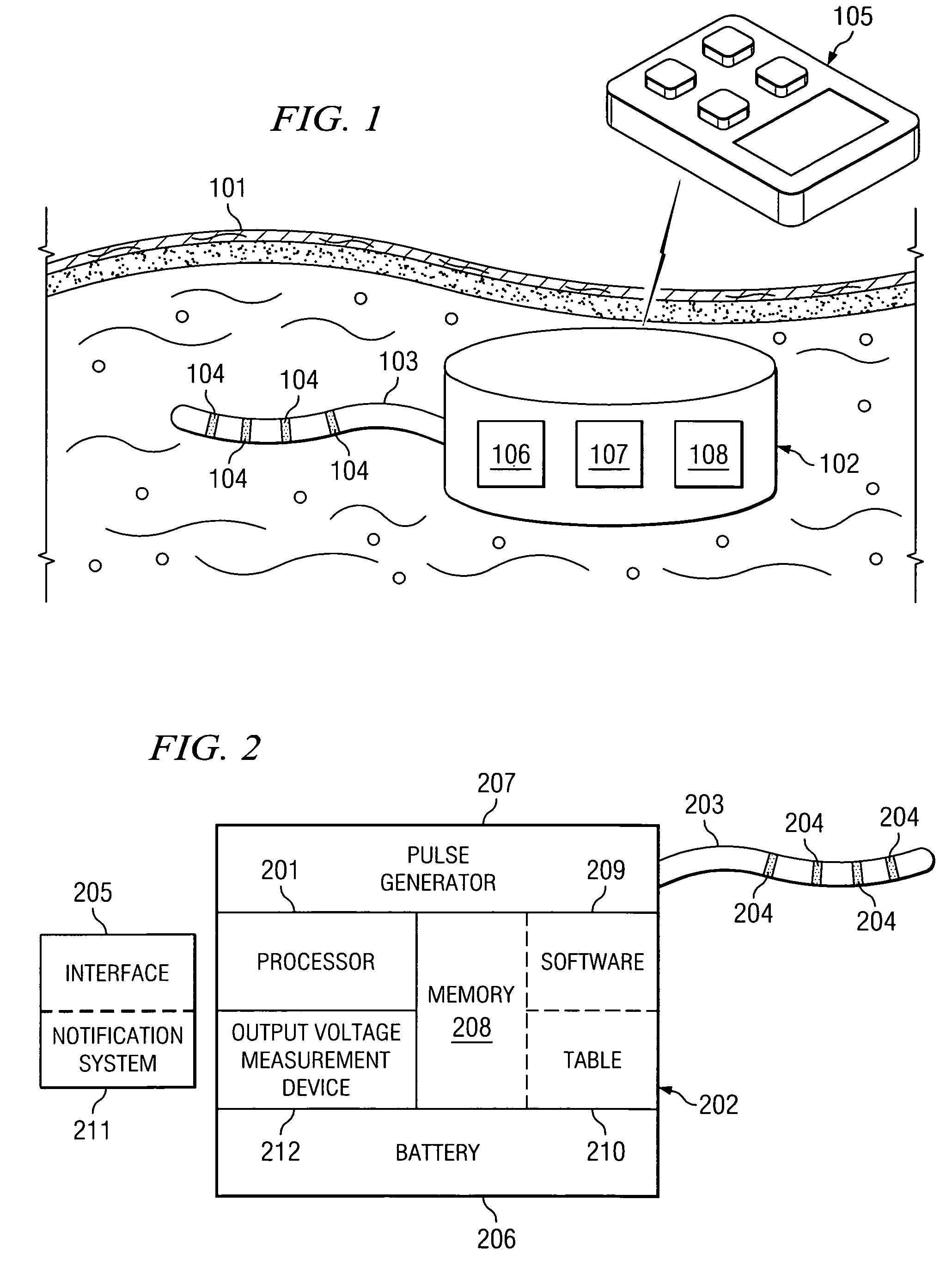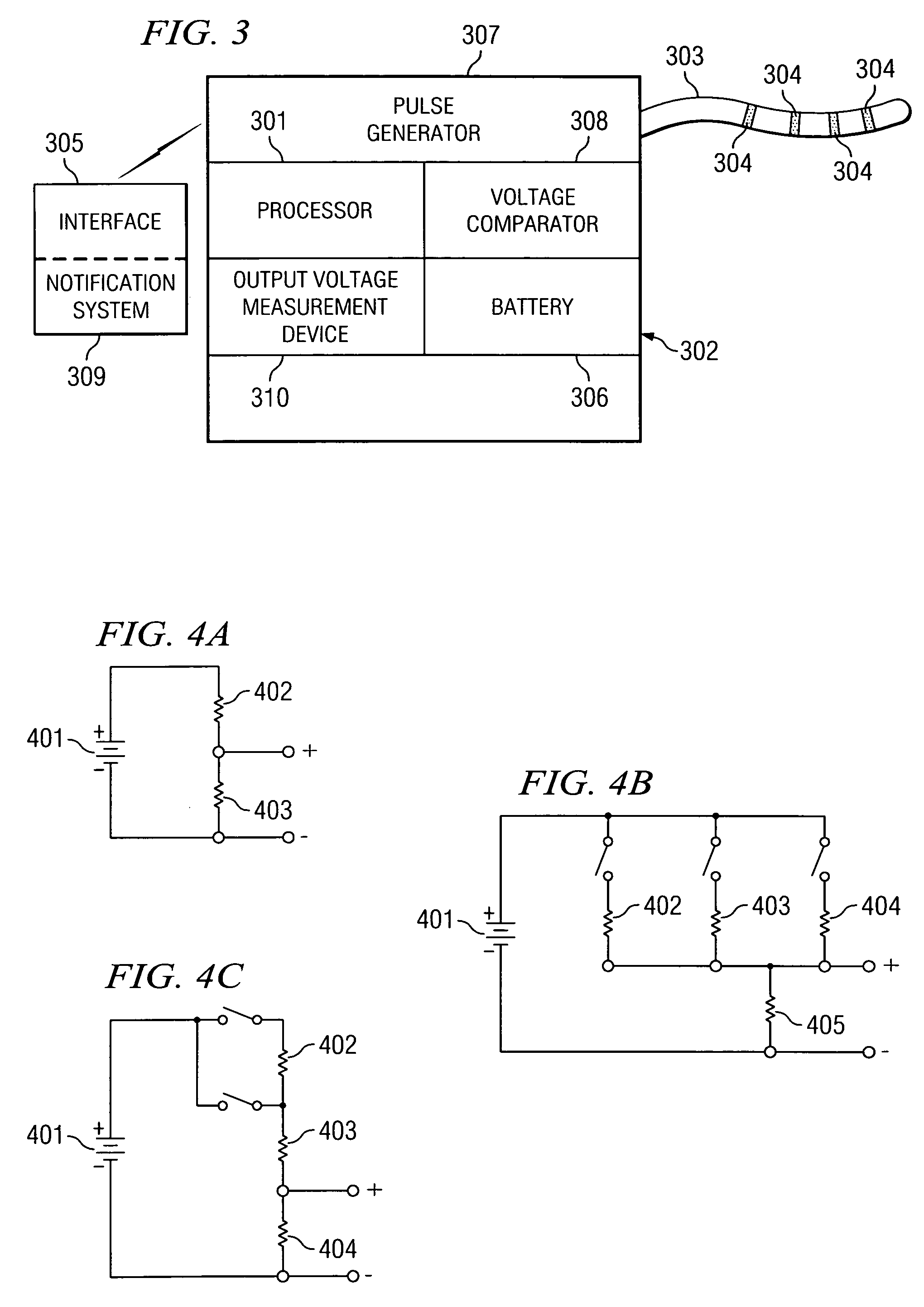Systems and methods used to reserve a constant battery capacity
a battery capacity and system technology, applied in secondary cells, cell components, therapy, etc., can solve the problems of battery power depletion below, device itself becoming nonfunctional, and various system settings may be lost, so as to reduce the quantity or quality, reserving battery capacity
- Summary
- Abstract
- Description
- Claims
- Application Information
AI Technical Summary
Benefits of technology
Problems solved by technology
Method used
Image
Examples
Embodiment Construction
[0027]FIG. 1 shows an electronic stimulation system adapted according to a preferred embodiment of the present invention. As shown in FIG. 1, an exemplary electronic stimulation system includes a pulse generating portion, shown here within pulse generator housing 102, and a stimulation delivery portion, shown here including electrodes 104. In the illustrated embodiment, pulse generator housing 102 may be implantable and inserted surgically beneath the skin 101 of a patient. Electrodes 104 may be coupled to a pulse generator 107 located inside implantable pulse generator housing 102 via lead 103. Electrodes 104 are located in an area selected to receive electrical stimulation. In some embodiments, more or less electrodes 104 and / or leads 103 than shown may be used. Electrodes 104 and portions of lead 103 in the illustrated embodiment are electrically conductive and capable of delivering an electrical pulse to the selected area.
[0028]Embodiments configured other than illustrated in FI...
PUM
 Login to View More
Login to View More Abstract
Description
Claims
Application Information
 Login to View More
Login to View More - R&D
- Intellectual Property
- Life Sciences
- Materials
- Tech Scout
- Unparalleled Data Quality
- Higher Quality Content
- 60% Fewer Hallucinations
Browse by: Latest US Patents, China's latest patents, Technical Efficacy Thesaurus, Application Domain, Technology Topic, Popular Technical Reports.
© 2025 PatSnap. All rights reserved.Legal|Privacy policy|Modern Slavery Act Transparency Statement|Sitemap|About US| Contact US: help@patsnap.com



